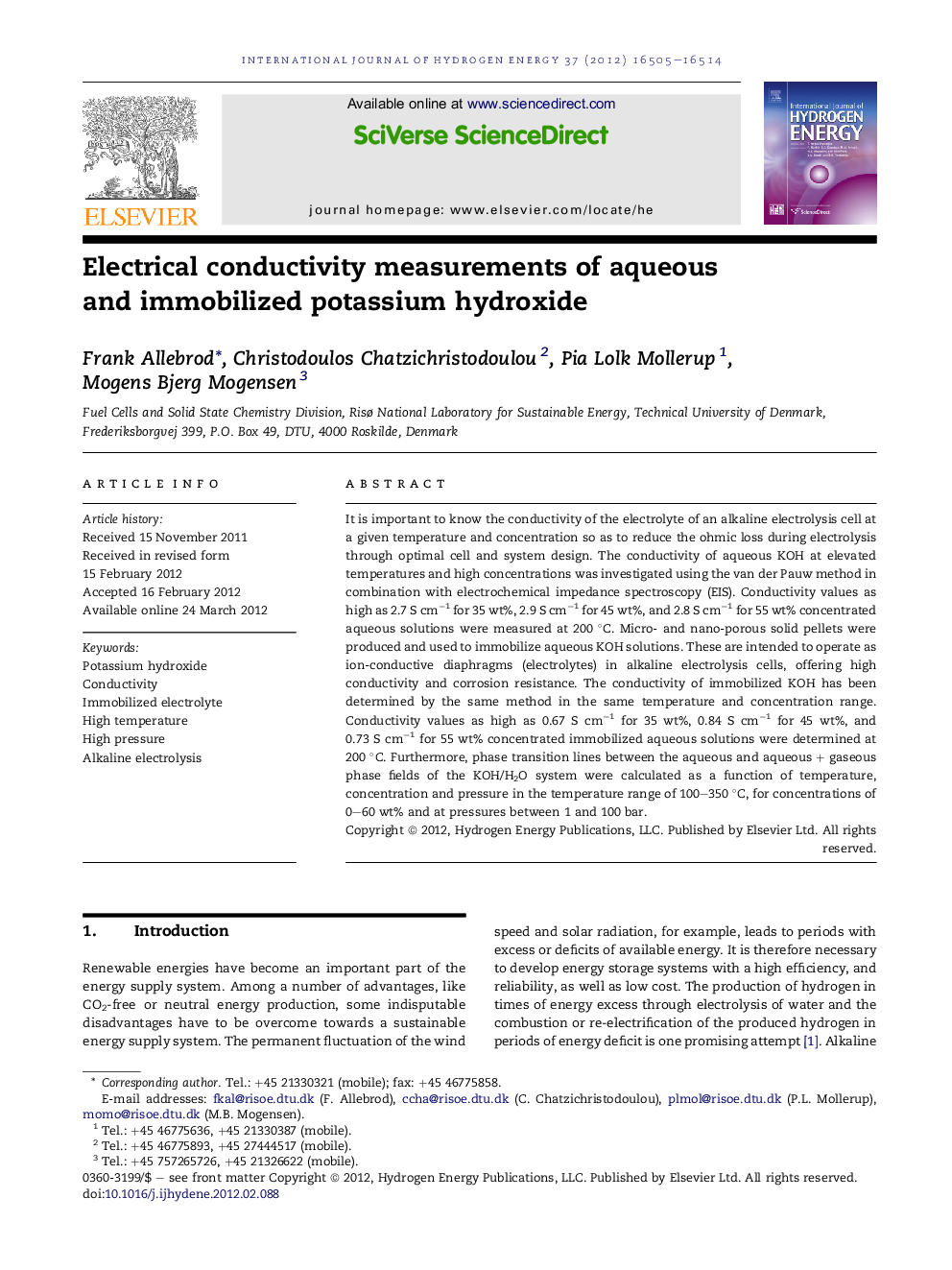| Article ID | Journal | Published Year | Pages | File Type |
|---|---|---|---|---|
| 1282182 | International Journal of Hydrogen Energy | 2012 | 10 Pages |
It is important to know the conductivity of the electrolyte of an alkaline electrolysis cell at a given temperature and concentration so as to reduce the ohmic loss during electrolysis through optimal cell and system design. The conductivity of aqueous KOH at elevated temperatures and high concentrations was investigated using the van der Pauw method in combination with electrochemical impedance spectroscopy (EIS). Conductivity values as high as 2.7 S cm−1 for 35 wt%, 2.9 S cm−1 for 45 wt%, and 2.8 S cm−1 for 55 wt% concentrated aqueous solutions were measured at 200 °C. Micro- and nano-porous solid pellets were produced and used to immobilize aqueous KOH solutions. These are intended to operate as ion-conductive diaphragms (electrolytes) in alkaline electrolysis cells, offering high conductivity and corrosion resistance. The conductivity of immobilized KOH has been determined by the same method in the same temperature and concentration range. Conductivity values as high as 0.67 S cm−1 for 35 wt%, 0.84 S cm−1 for 45 wt%, and 0.73 S cm−1 for 55 wt% concentrated immobilized aqueous solutions were determined at 200 °C. Furthermore, phase transition lines between the aqueous and aqueous + gaseous phase fields of the KOH/H2O system were calculated as a function of temperature, concentration and pressure in the temperature range of 100–350 °C, for concentrations of 0–60 wt% and at pressures between 1 and 100 bar.
► The conductivity as a function of the temperature and concentration of potassium hydroxide (aq) was measured. ► The 45 wt% solution showed the highest conductivity at 200 °C with 2.9 S cm−1. ► The conductivity of immobilized potassium hydroxide (aq) was measured similarly. ► The best conductivity for the immobilized solution at 200 °C was 0.84 S cm−1.
